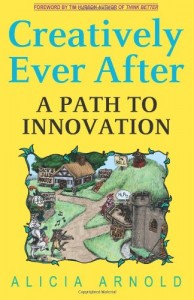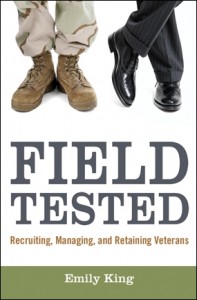I love getting questions about what it’s like getting a job in HR. Today I’m giving C a hand with her questions (answering a little late, but better than never!).
As a generalist, what exactly is your job like? What kind of projects do you work on, etc?
Every day is fairly different in my role, though a generalist at a larger company might not be able to say that. For instance, in recent weeks I’ve worked on collecting and analyzing company-wide performance reviews, drafted open enrollment communications describing our changes to benefits and premiums, worked with one of our admins to develop an activity for our executive retreat, and worked with our managers to develop goals for their employees for the coming year. In the coming weeks I’m working to create our affirmative action plan, develop job descriptions for our employees, and evaluate a new benefits vendor. It truly is a little bit of everything!
The thing that intrigues me most about HR is the potential to help people and help turn the work environment and experience in general into something more enjoyable for and considerate of today’s workers. After seeing how HR seems to be transforming due to web-workers and companies like Zappos, it almost seems like HR is the frontline for effecting change in labor relations.Â
How much of this is actually true? How much of your job (or any HR position for that matter) actually deals with actual employees or things that directly affect them and in what ways? How much influence do you have on your employees and their work environment as an HR person?Â
Great question! Just like Zappos, we do a lot of culture building and sharing, and it’s really helped us to develop a strong, unified workforce. One of the barriers is the level of respect that HR gets in the business, though. In previous employers HR was expected to be a quiet, back corner admin function. And that’s all it was. At my current employer the HR function is involved in planning and strategy meetings at all levels.
In my job, I deal with employees on a daily basis. However, that’s not the norm. As a small company I have the opportunity to have a high-touch relationship with our employees. That means they get more individual value out of me, but it also means that it doesn’t scale. In other words, as we add employees, we’ll have to add more to the HR team or reduce the hands on interaction.
I have a bachelor’s in business administration and most of my experience is in customer service, product support, and some IT roles (about 8 years of customer service experience). In your opinion, how are these skills relevant to the career?
The degree is a good one. It might not give you the deep background an HR degree would, but it does give you better awareness of the other business functions and how HR ties into those.
I would say that customer service experience translates well to an entry t0 mid level HR role. The higher you go the less interaction you have with people directly, but at those lower levels you do more face-to-face interaction with managers and staff. One of the interesting things about the HR profession is that we have people from every conceivable type of background.
If you are working in a company that specializes in IT services, to use your example, being an HR person there would mean you understand what the employees’ jobs are like and how you can best help them to be successful. At my current employer, I had very little experience in the industry, but I obviously like writing, so I was given the Communications hat as well as the HR/recruiting one. It’s a great way they have decided to utilize my skills and interests to make the organization better.
Working off of the last question, should I be focused on completing a certification asap? If so, how should I prepare for the exam considering I don’t have experience in HR?
In order to get certified (PHR/SPHR), you now have to have several years of exempt level HR experience to take the exam. It’s not a huge bump up in terms of marketability as a candidate, even if you could get it, since you don’t really have experience. I’d focus instead on using your general business education to increase the value of the HR function.
I am in the process of starting a family. I have read salary surveys and such but what is the income potential really like in HR?
Honestly, it’s different everywhere. Here in Huntsville (which is one tiny market among thousands in the US and worldwide) an HR assistant can make from $20-30k, HR generalists 30-70k, HR directors/managers from 50-100k+, depending on experience level and industry. It varies wildly and depends on the value you are bringing the business.
A good company will look at how you are increasing their profitability or reducing costs and work hard to compensate you accordingly. Someone who files papers 8 hours a day is going to be less valuable than someone developing and rolling out a new pay for performance compensation strategy.
Are there any resources out there about LGBT representation within the career? I looked around but was pretty unsuccessful in finding anything substantial.
I am actually good friends with a few individuals who fall into that category. I am not sure if they are comfortable with me shouting it from this platform, but they certainly do exist. I would say HR people in general are more tolerant of other beliefs (we see too many not to be!). If you want more information on this specifically I can put you in touch with one of them since I have no personal experience with this issue.
And there you have it, C! I hope that helps and that you are still interested after that exposure. :-) Good luck!
If anyone else has questions they’d like to ask, feel free to email me at ben@upstarthr.com. Thanks!

